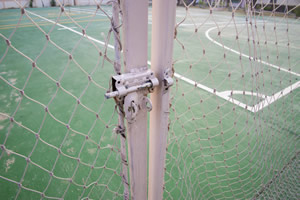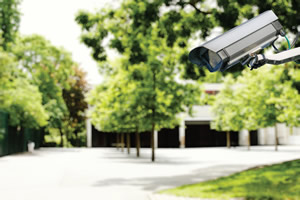School Security Technology Has Learned a Lot
- By Michael Fickes
- 12/01/16

PHOTO © HAVE A NICE DAY PHOTO
Secuirty professionals largely agree that today’s
security technology performs better than ever. “We have
never seen security technology with this level of quality,”
says Michael Dorn, executive director with Safe Haven International
in Atlanta. “I’ve been in the business for 35 years. Back then
we had decent camera systems integrated with buzzer access for
instance. But the solutions from that era didn’t deliver the value for
the dollar that we see today.”
From visitor management and general access control to camera
networks and pre-recorded emergency messages, today’s technology
makes it possible to build a smoothly operating, unobtrusive
and effective security environment. Of course, appropriate training
of security personnel as well as non-security personnel in the
operation of the security system is necessary to ensure the system’s
effectiveness.
In effect, training enables a facility’s personnel to use the
technology properly, which ensures that the technology will work
as effectively as possible.
Visitor Management
The rare but tragic incidents of gun
violence in schools that have occurred in
recent years have raised visitor management
to top of mind of security professionals
and school administrators when putting
together or refining a school security
system.

PHOTO © ANDREY_POPOV
Who’s there? Cameras can be positioned outside around the perimeter of the school and inside
in the corridors to monitor who is wandering around. But it is important that people are properly
trained to monitor the system. What should they be watching for? Do they know how to download
video of events and save it for later review by security and the police?
Visitor management policies aim to
let certain visitors in and keep others out.
“You don’t want to let sexual predators in,
angry ex-spouses or others with no legitimate
business,” says Randy Braverman,
director of campus safety at Oak Park and
River Forest High School in Oak Park, Ill.
“You need to have some way to check
visitors,” he goes on to say. “You also need
to register visitors entering the building.”
This is important, notes Braverman,
because in an emergency requiring evacuation,
you need to make sure that all the visitors in the building exit along with
students, faculty and administrators.
Visitor management technology uses
driver’s licenses or other forms of identification
to get the process right. Typical systems
enable security personnel to enter the names
of people that should not be admitted. With
that information, the system can flag unauthorized
individuals. Using the information
on driver’s licenses, visitor management
technology can also check names against
criminal, predator and terrorist databases.
Access Management
Security professionals note that visitor
management and access control are two
separate yet key security needs. Legitimate
visitors come to a school’s front door, but
schools have many other doors. There
are back doors, side doors, garage doors,
delivery doors and so on.
“Schools need door technology that sets
off an alarm when a door opens at a time of
day when it should be locked,” Braverman
says. “The alarm goes to the control room
as well as cellphones carried by security
officers — or school personnel doubling as
security personnel. They need to know who
is coming in and walking out.”
In addition, this technology can alert
security when a door is propped open,
something students do all too often.
Cameras can support access management.
They can be positioned inside doors and
generally keep an eye on the corridors. These
cameras can then be programmed to pan to a
door that opens at the wrong time of day.

PHOTO © TAMANKUNG
Cameras Inside and Out
Again, the threat of tragedy has led
many schools to begin adding cameras as
funding permits. They can be positioned
outside around the perimeter of the school
and inside in the corridors.
“Most schools don’t have enough people
to monitor all the cameras all the time,”
says Braverman. “But you can watch
certain cameras, especially those that show
who is entering and leaving.
You must also train people to monitor the
system. What should they be monitoring for?
Fights. Doors that open at the wrong time.
People running and other unusual events.
Monitors must also know how to
download video of events and save it for
later review by security and the police, if
appropriate.
It’s also important to call in the police
and provide technology that will enable
them to tap into the cameras during an
emergency.
“Thoughtful Supervision”
Safe Haven’s Michael Dorn notes that
cameras can also improve student supervision.
“By monitoring cameras, you may
spot a bad guy now and then,” he says. “But
we also think cameras can improve student
supervision.
“Thoughtful student supervision can
reduce the risk of injury and even death.
You will need good quality camera systems
and camera placement that will enable the
security manager and staff to focus on appropriate
views.”
What are appropriate views?
“We work to think beyond the traditional
ideas of using cameras,” Dorn says.
For instance, he recommends using
cameras to spot check security staff on
patrol. By capturing positive supervision
practices on video, they can be incorporated
into training for security officers as
well as faculty and staff.
Another example: “You might capture
a teacher not supervising per policy,” Dorn
says. “Perhaps he or she is not wearing an
orange safety vest called for in your policies.
You would then draft a memo to the
principal, who speak to the individual.
“If something goes wrong, you will
have a record of the steps you have taken to
improve the level of supervision.”
It’s an innovative way to approach cameras.
Most security operations use camera
systems for investigations — to review
incidents after the fact.
Dorn’s idea of “thoughtful supervision”
aims to prevent incidents from happening
in the first place — and often succeeds.
Get Smart
The continuing digital revolution is also
developing new security technologies. On example is In-telligent, a new mobile app designed to issue emergency
messages such as life safety warnings.
Created by In-telligent LLC, the app works on Apple and Android
mobile devices. It is a free app available for download from
the Apple App Store and the Windows Play site.

PHOTO © PIXINOO
“In-telligent is easy to use,” says Jared Stewart, spokesperson
with the Milwaukee-based Moon Landing Agency, which is rolling
out the device.
“A school administrator would manage the app, which creates
a geo-fence or a communication area with geographic boundaries
around a school or a campus,” he continues. “Students, faculty,
administrators and parents, too, can download the app, launch it
and create user accounts for themselves.”
Users with active accounts will automatically be added to any
In-telligent community when they are physically within its predetermined
geographic borders, says Stewart. Users can also set the
software to follow a particular community and receive alerts from
that community even when they happen to be outside that community’s
geographic communication border.
If there is a fire, tornado, shooter or other emergency, the administrator
managing the app can send alerts to anyone.
“The alerts will show up as notifications on users’ phones,”
says Stewart. “In-telligent alerts will override the silent settings on
users’ phones. Up until now only amber alerts and severe weather
alerts could do this, but In-telligent has been cleared to do it too.
“The community manager can target messages, too. If something
is happening in one residence hall, the message can be sent
only to those in the hall.”
In-telligent can also deliver non-life safety announcements as
messages. It can send messages promoting an event on campus
or sharing news stories, for instance. It can also send photos and
videos.
Finally, from visitor management and access control through
cameras and emergency communications, K-12 school security
technologies are better than ever, while new technologies are
emerging and taking on new tasks.
This article originally appeared in the issue of .